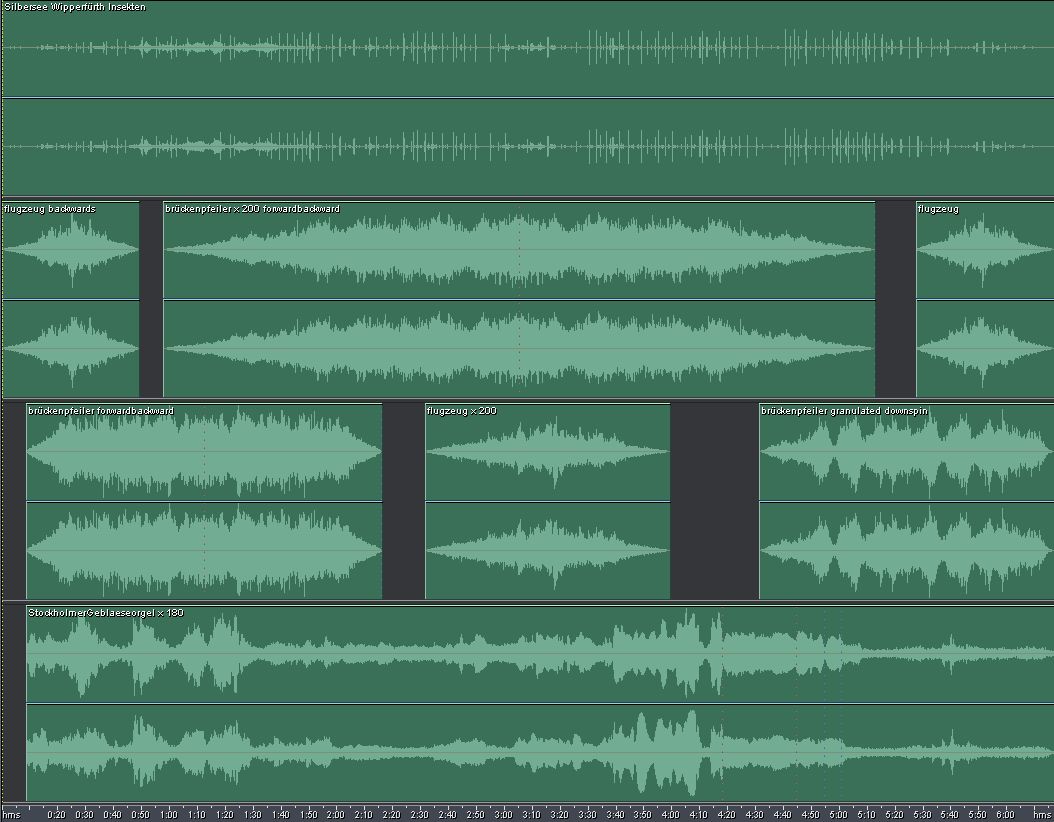Several times between 2010 and 2018, I spent some time with Italian pianist Fabio Anile at his place in Rome. Fabio and I share a love for ambient music – we improvised every day and recorded everything. It was amazing how easily we found a common musical language.

In 2018, we decided to put some of our recordings on an album. Erdem Helvacıoğlu mastered them for us, and Philippe Paulus Jacobus Smeyers contributed a wonderful cover painting. The album ‚Presence‘ got released in December 2019 on the Audiobulb label. Fabio and I are very happy with it.
“Presence” consists of 13 quiet ambient soundscapes for piano, electric guitar, electronics, livelooping, and field recordings. There are no overdubs (except for the field recordings).
“In the early days of burningshed.com, we received very huge amounts of ambient improvised music, much of it very good. Michael Peters’ „Stretched Landscape #1“ nonetheless stood out amongst those. This collaboration with Fabio Anile captures all I loved about that recording and builds on it; its slowly evolving soundscape hovers at the fringes of your attention and quietly brings you into its world. It’s a beautiful thing to hear two musicians who can clearly play well choosing to play so minimally and tastefully”
– Peter Chilvers (burningshed.com founding director and Brian Eno collaborator)
„When creating a minimalist album everything has to surrender the approach you take for such an album cannot simply “be made” – it needs a framework in order to make sense of itself. It is nothing you can simply do, right? Hell, no! Sometimes minimalist recordings can be created out of nothing, but only if the people involved know what they do and how they need to do it. Simpletons cannot create minimalist music for improvising such an abstract version of music needs a lot of skill, knowledge, craftsmanship and experience.
Fabio Anile and Michael Peters, two very experienced musicians with more than 50 years of making music shared between them, are such connoisseurs and aptly skilled instrumentalists stemming from very different backgrounds. While Fabio was trained in composing and performing classical music, Michael comes from the rather avant-garde corner of punk and direct interaction. Both artists share a sense of closeness when performing together, which they did over a longer period of time. The recording of “Presence” took eight years, probably because they did not follow a pattern but improvised everything together which, of course, is pretty difficult considering you must really get a feel for where your partner “is heading” with this one sound and this one idea.
When you combine that with an immense feeling for beauty, for just the right amount of using the elements of Peters’ guitar (looped through some effects and such, sometimes even certain software) or the right pressure on Anile’s keys (also incorporating field recordings of natural sounds) in order to make it sound like a perfect soundtrack to a day off in the dark, newly erect skyscraper before it’s being furnished or amidst the rain in a dense, moss-covered wood with the first rays of sunlight just stretching through the clouds and touching you while simultaneously the last drops splash heavily onto your shoulders and neck.
This is a really, really beautiful ambient album made by two musicians who know themselves, their instrument and each other so well that the product inevitably had to be either a forerunner for next year’s album of the year among post-rock and ambient fans or a late dark horse for this year’s lists full of such sounds and spaces.“
– Merchants of Air
Some reviews:
„This is a really, really beautiful album“
„Spontaneous chronicles of precious moments of inner peace“
„A beautiful cotton softness“
„The first rays of sun spread through the clouds“












